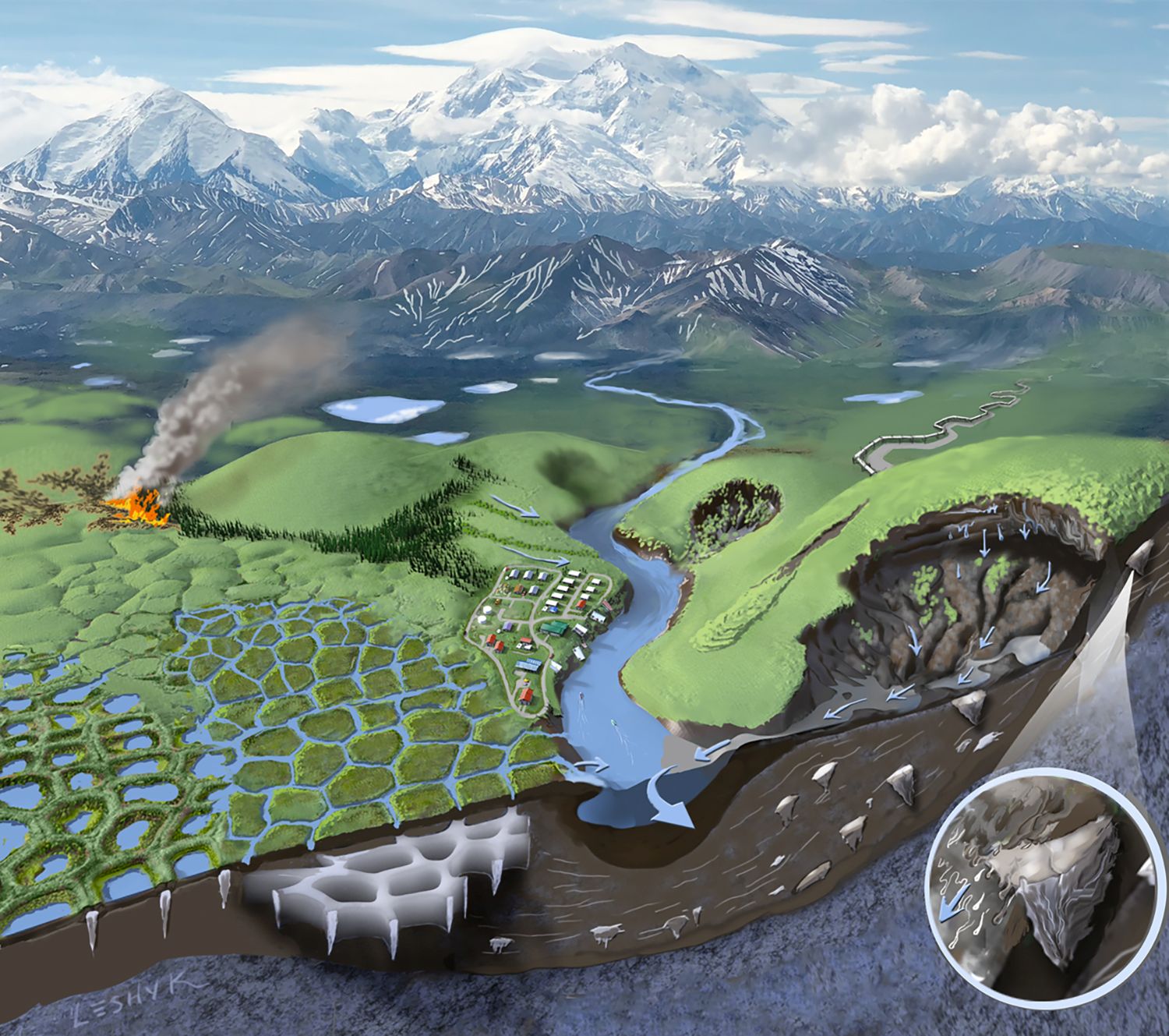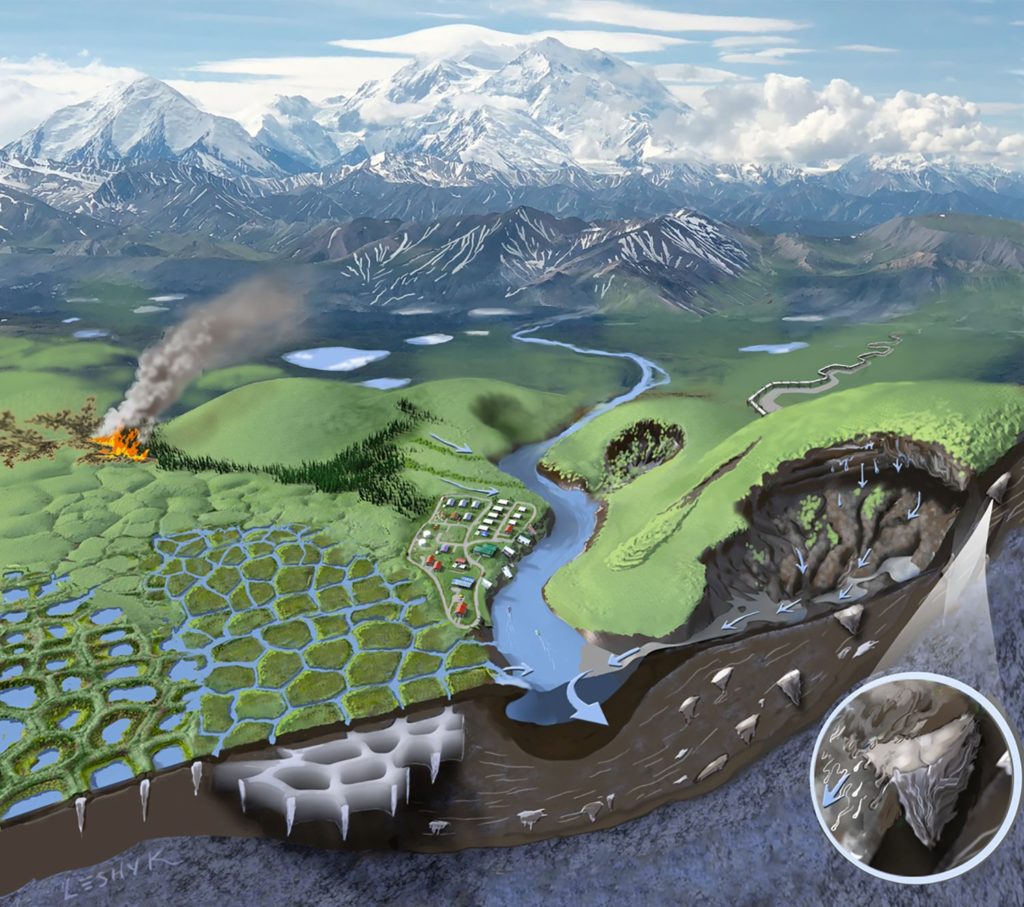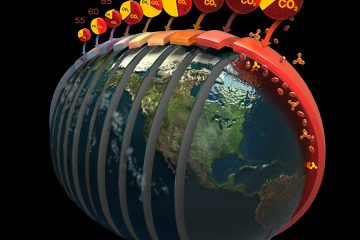Abrupt thaw could boost permafrost carbon emissions, new study finds

The abrupt thawing of permafrost may affect up to half of all carbon stored in the layer of frozen Arctic soil, according to a new study in Nature Geoscience, and could double permafrost’s contributions to global climate warming compared to some previous model estimates that focused on gradual thaw alone. The study, led by CU-Boulder researcher Merritt Turetsky and co-authored by Ecoss researcher Ted Schuur and other national collaborators as part of the Permafrost Carbon Network, demonstrates the need for climate models that account for this fast and dramatic form of ecosystem change.
Abrupt thaw, also known as thermokarst, can trigger collapsing ground, rapid erosion and landslides, and the ice-rich permafrost that makes up around one-fifth of the Arctic region is especially vulnerable to these kinds of events. Permafrost that abruptly thaws is a large emitter of carbon, including the release of carbon dioxide as well as methane, which is more potent as a greenhouse gas than carbon dioxide. That means that even though at any given time less than five percent of the Arctic permafrost region is likely to be experiencing abrupt thaw, those areas’ emissions will equal those of areas experiencing gradual thaw.
“Our findings show that the accelerating climate feedback from a warming Arctic is likely to happen even faster than previously forecast,” said Ted Schuur, a co-author on the study who co-directs the Permafrost Carbon Network with Ecoss researcher Christina Schädel.

“Forests can become lakes in the course of a month, landslides occur with no warning, and invisible methane seep holes can swallow snowmobiles whole,” said Merritt Turetsky, director of the Institute of Arctic and Alpine Research (INSTAAR) at CU Boulder and lead author of the study. She said this is the first paper to pull together the wide body of literature on past and current abrupt thaw across different types of landscapes.
They found that thermokarst always involves flooding, inundation, or landslides. Intense rainfall events and the open, black landscapes that result from wildfires can speed up this dramatic process. The authors then used this information along with a numerical model to project future abrupt thaw carbon losses, and compared it to carbon loss from gradual permafrost thaw, trying to quantify a ‘known unknown.’
“So far, abrupt permafrost thaw has not been included in large scale models,” said Schuur. In fact, only a handful of climate models consider permafrost thaw at all. While large-scale models over the past decade have tried to better account for feedback loops in the Arctic, the Intergovernmental Panel on Climate Change (IPCC)’s most recent modeling only includes estimates of gradual permafrost thaw as an unresolved Earth system feedback.
The findings bring new urgency to including permafrost in all types of climate models and the need for strong climate policy.
“We can definitely stave off the worst consequences of climate change if we act in the next decade,” said Turetsky. “We have clear evidence that policy is going to help the north and thus it’s going to help dictate our future climate.”
Learn more about the Permafrost Carbon Network here.
Thank you to science writer Kelsey Simpkins for her contributions to this story.


